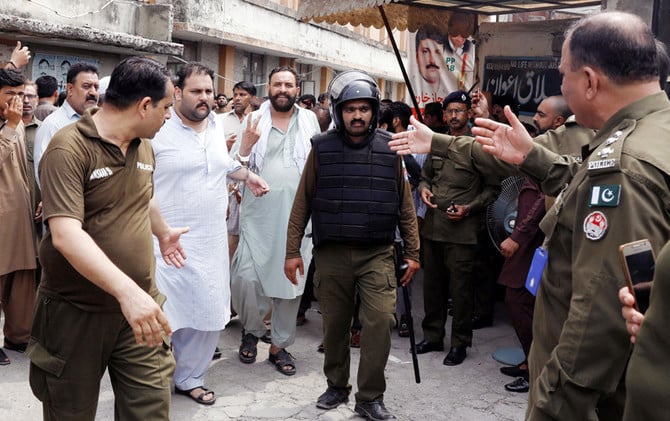With a few weeks remaining before the first anniversary of the May 9 riots, the Punjab Police appears to have pivoted its methods towards the traditional blatant use of force and humiliating tactics to spread terror for creating deterrence against crimes.
In the past two decades, there had been a heated debate between the old and new schools of thought regarding policing in the province. The new school advocated for organizing the department on a public service-oriented model, professionalism and modernization in accordance with contemporary global trends.
The old school wanted to stick to the centuries-old crude policing techniques, while the new school advocated the use of technology in crime prevention, upgrading the infrastructure, improving evidence collection and focusing on detection.
It advocated community policing — building cooperation with the public in crime fighting.
The old school wished to continue operating Punjab Police on the imperialist model of Irish Military Police and focused on creating deterrence to fight crime. Its adherents defended the practices of torture, illegal detention and staged encounters to create a sense of fear among criminals against committing crime.
It is said the time is the best teacher. The debate was fortunately going on the 21st century, when the world was fast changing. It looked like the advocates of the new approach had won as policies were being implemented in the department. Police rules, regulations and training were revised and the department’s work was converted from manual to IT based.
Focus was also evident on improving the public image of the police, working conditions of the personnel and their training.
Before the introduction of news channels and mobile phone cameras at the mass level in the country, especially in the 80s and 90s, it was a common practice of the police to publicly humiliate a criminal by shaving his head, flogging and ransacking his property. It was an acceptable norm in the police rank and file. The officers who committed such brutal acts repeatedly were lauded.
Gradually, the frequency of such incidents decreased, but they did not end.
Then came a time when departmental action was taken whenever sch a case of highhandedness was reported.
The police officers began conceding that such measures should be stopped as they tainted the image of the police among the people.
And then happened the May 9 riots.
Horrific tales of police excesses and brutalities, a reminiscence of colonial times, were reported at scale not heard of in the past two decades.
Initially, the blatant use of police force was directed against the suspects linked to the May 9 riots.
However, the trend gradually became routine.
An example is the recent arrest of High Court Advocate Mian Abdul Mateen after an FIR was registered against him under the Prevention of Electronic Crimes Act 2016 on the charge of sharing the videos of a police station.
Over a dozen policemen from Tibbi City police station raided his office after midnight and dragged him to a police van.
The policemen made him walk barefoot in the police station and recorded his video, which was shared online after adding background music.
Even police officers of the rand of inspector shared visuals of the lawyer handcuffed and barefoot in the police station on their social media accounts with taunting and humiliating poetry, music and quotes.
A day later, an FIR under the Anti-Terrorism Act was registered against a brother of the detained lawyer was also registered. The police raided his office and also detained his associates who had nothing to do with the FIR.
Another case was reported from the Badami Bagh area, where a police constable and his son murdered a local man having criminal record.
A video surfaced in which the deceased criminal could be seen hitting a man in his head with his shoe in a police station while a constable was holding his handcuff. The head of the victim was also shaved.
Another case led to the transfer of Liaqat Malik as DIG of the Organised Crime Unit (OCU) after a man accused officers of the police wing of inhumane treatment and molestation with threats of making videos of his wife viral.
The complainant accused the police in a video of subjecting him to humiliation to stop him from pursuing the return of his Rs14 million rupees that the police had taken hold off.
Pointing out that the inhumane policing practices had become redundant because of their failure would be tantamount to stating the obvious. The need for innovative policies had been felt because of this and reverting to the old tactics would not serve any cause.
Published in The Express Tribune, April 22nd, 2024.

